Think about a giant crater, full of volcanos with frozen summits, altiplano lagoons full of flamingos and also lunar landscapes underneath the most starry sky of the planet. This way it’s easy to understand the crowd of travellers that dream of meeting the Atacama Desert.
Think about a giant crater, full of volcanos with frozen summits, altiplano lagoons full of flamingos and also lunar landscapes underneath the most starry sky of the planet. This way it’s easy to understand the crowd of travellers that dream of meeting the Atacama Desert!
They were amazing weeks! One of them with our camper parked at local people houses, who received us like brothers and allowed us to get to know better the way of living and culture of the desert. Besides learning about the Chilean humor, which is almost the same of learning a new language. Hehe!
So keep on reading to find out beautiful places, trekkings, rock climbing, volunteer work and other unique experiences that you can have in Atacama!
We listed the places we enjoyed the most around there, with tips, business hours and ticket fares (in chilean pesos, that at the time we were there it was at about U$ 1,5 for each 1.000 pesos):
Tips of What to Do in Atacama Desert
Laguna Tebenquiche and Ojos del Salar

These were one of the first stops of our exploration through the Atacama Desert. While on the road, we saw by far two perfect craters on the ground, full of water inside. As we went without a defined itinerary, we didn’t what they were.
The administrators of the place, who are part of the native community of Coyo, came to us and explained those curious formations are the Ojos del Salar and that the water inside them is salty.
Next to the Ojos it’s placed on the the most beautiful lagoons we’ve ever seen. Laguna Tebenquiche mirrors all its surrounding, with the Andes Range and its volcanos, the colors of the desert, salt formations and flamingos, creating a surreal landscape!
The visit to the Ojos del Salar is free and to the Laguna Tebenquiche is 2.000 chilean pesos (at about U$3), being one of the tours with the most approachable fares of Atacama.
Another tour that is usually included to this route is bathing in the Laguna Cejar, that due to its high salt concentration the body floats very easily. We went until the beginning of it, but in our opinion it’s too expensive and we didn’t enter (15.000 chilean pesos or around U$23 for person).
Pueblo de Artesanos

I asked to a new friend who is living in San Pedro do Atacama – Pauline, from Paris – about a different place to meet in the city. So we went to on a bike tour and she took me to Pueblo de Artesanos.
Pueblo is a place with stores and ateliers of local craftsmen, some coffee shops, restaurants and space for cultural presentations. There you’ll find crafts from eight population from the local Altiplano, that work with volcanic stones, seeds, ceramics, mosaics, rock paintings, copper and silver accessories, recycled material, and others.
In Pueblo de Artesanos it is possible to follow the handmade process of the products, since many of them own an atelier just in there. #buyfromwhomakes
Pueblo de Artesanos is located at the entrance of the city’s bus station (Calle Tumisa) and is open almost every day, except for tuesdays, from 10:30 a.m. to 7p.m..
Spa of Puritama

Inside a canyon, in a river with hot water (between 25 and 30ºC), the Spa of Puritama is a good place to bathe and relax, even when it’s a bit cold. There are many natural swimming pools and small waterfalls to bathe.
The place counts with bathrooms, changing rooms and covered picnic tables. And even being a touristic attraction, it still keeps a charming rusticity, with red wooden footbridges and straw-kind plants, that are native.
Besides relaxing, the place is also recommended for alternative medical treatments. The water from the river is rich is in sodium sulphate and are recommended to treat rheumatism, arthritis, weariness, pain and stress.
The Spa of Puritana is 30km far from San Pedro and 3.500 meters of height. It’s 15.000 per person and in week days after 2p.m. they charge 9.000 per person. We went after 2p.m. and found it was enough time to enjoy the bathe and relax.
It’s located on the way to Geyser del Tatio (I talk about it below) and we passed there on the way to spend the night with our camper in the parking lot from there. Who goes with tours or a rented car usually go to the spa right after visiting the Geyser, but since in the Geyser there is also a pool with hot springs, we prefered this way.
Geyser del Tatio


Geyser del Tatio is a beautiful show of the eruption of water and gases that start with the sunrise and gets until 10m high. The altitude of 5.200m and negative temperatures (we got -15ºC), combined with a desertic landscape, with old machines on the background, made us feel as in the Madmax movie!
This is the third biggest geyser field in the world, with 40 of them spread in 3Km². There is also a thermal rustic pool, where you can bathe and enjoy the geysers view. For a moment I doubted the water would be hot enough to handle the cold outside, but some spots near the spring are really hot. Besides the fact that bathe enjoying this view was unmissable.
If you travel by camper, it is possible to spend the night in the geyser parking lot. It’s unofficial, but the guard of the place come to talk and doesn’t make trouble. There are bathrooms there, that are open at night.
We chose to do it since the visit starts at 5:30 a.m. and the geysers are 80 Km far from San Pedro de Atacama – and with a rough road. In spite of not be waiting such an extreme cold, we could sleep kind of well and the adventure was worth it!
The entrance fare is 5.000 for foreigners and 3.500 for Chileans.
ALMA Project

The Atacama Desert is considered the place with the best visibility of the outer from all over the planet. Therefore, it was the chosen place to build the ALMA, which is the biggest astronomical observatory of the world and also the highest, with 5.000 meters of altitude.
According to a guide of the place, ALMA “counts with 66 telescopes or radio antennas, most of them with 12m of diameter”. It works as fragments from a giant telescope, equivalent to an antenna with 16 Km of diameter. And together study the birth of galaxies, stars and planets.
This is an international project, that counts with the collaboration of Chile, United States, Europe, Japan, Canada, Taiwan and South Korea.
The Site of Support to the Operations of ALMA receive visitors, when it’s possible to meet the control room, labs and usually the antennas maintenance.
The visits are on Saturdays and Sundays morning, from 9a.m. to 1 p.m.. The tour is free and it’s necessary to enroll in advance in the website http://www.alma.cl/ (usually at least a month before). Children younger than 4 are not allowed to visit.
The place is 50 Km far from San Pedro de Atacama and ALMA offers free transport from the city until there.
Tambillo Wood

Since we’re travelling by camper (that is a house and car at the same time), we look for shadows so as to cook and rest. And as you can imagine…shadow is a rare thing in a desert!
Driving on the way to Toconao and Socaire, we were surprised when we saw…trees! Tambillo Wood is one of the few places of Atacama that has trees. They are covered with thorns, of an specie called Tamarins, but it’s worth.
For those who are travelling by car, it’s a good place to have a picnic, with a small place with tables and seats. Some tours stop to have a snack there too.
For outlanders (travellers by land) it is a good wild camping. We and some people with other two camper spent a peaceful night there!
Rock Climbing

In Atacama Desert there are two rock climbing peaks: Socaire and Toconao. With sports and trad climbing, surrounded by the incredible landscapes of the desert.
We spent some days climbing there and have given some betas, map and croquis indications in the post Climbing in Chile.
Lazcar Volcano and Lejia Lagoon

The Lazcar Volcano is 5.650m high and is one of the few active volcanos in the North of Chile. So besides a beautiful trekking, you can also see the gases of the volcano getting to the summit (but not lava).
Our adventure included getting up at the sunrise in the middle of the mountains and have breakfast by the Leija Lagoon, that is near Lazcar and other volcanos around.
It is possible to get by car until 5.000m of altitude and then go up the other 650m. The track isn’t very technical, but the height really gets to you!
We chose to take the walking on our own, without guide, and we found it fine, since the track is well marked! We have even downloaded the trail on GPS and invited our new friends from Switzerland to come along (this way we could help ourselves in cas of any problems with the cars), but getting there we saw that the for 4x4s pick ups was good!
It’s worth saying that we are used to taking tracks and also went in the summer season – in the winter it can be rainy and very snowy. So if you feel unsafe, it’s better to get a guide (that’s about 100.000 per person). There isn’t a fare to go up in the mountain.
Ghost City of Talabre Viejo

While going and coming back from the Lazcar Volcano ascension, we spent the night in Talabre Viejo, a village that became a ghost place, due to an eruption of this volcano in the 80’s.
“Even being dozens kilometers far from the volcano, there’s few left from Talabre, today known as Talabre Viejo. What was once a prosperous village, maybe with thousands of people, turned out to be only ashes. Nevertheless we could feel what this place was someday, the presence of life that one day existed there.
It’s interesting to look at the buildings and also details of the religious mix present in that region: Pagan symbols of llama, stars, grains representing the earth Pachamama, put together with the cross symble from the Catholic religion. Everything sculpted on the small altar of the abandoned church” – report of Gabriel B. Coutinho, co-founder of Local Planet and my partner for life.
Talabre Viejo is not a place set for tourism, so there isn’t structure nor entrance fare. We went with our car until there and for the ones that travel by other means I believe there aren’t any organized tours.
It’s worth saying that the road, as soon as it passes the graveyard, starts to get very sandy and can make the access more difficult. For those who travel by motorcycle or without a 4x4s car it is better taking the road on foot.
Salt Mountain Range

The Salt Mountain Range is a belvedere with a wonderful view of a place that used to be a lake, emerged and molded through 23 million of years.
It is true that almost every place of the Atacama Desert are a perfect set for the sunset, but here was one of our favorites!
The curious is that here the entrance is free, while next to it there is the Mirador de Kari, that charges the entrance (but if you make it at the same day of visiting the Moon Valley it is included). We chose the free one, that doesn’t leave anything behind! 😉
Moon Valley

With beautiful rock formations and very close to the city of San Pedro, only 4 Km, the Moon Valley (or Valle de la Luna) is the most popular place in Atacama.
Even with the great quantity of tourists, the visiting to the Valley is surreal. Besides the wonderful landscapes as far as the eye can see, it is possible to feel the ancestral energy from the place.
We didn’t know the place was so big and with so many places to explore, so we got there at 1:30 before the closing time. But instead of causing anxiety, it actually gave us unique moments…like going to the rock formations of Las Tres Marias right after the sunset, when the dozens of visitors were already coming back. So we got a rare moment of having the place just to us.
While appreciating all that beauty, we listened the sound of a flute playing native songs. It was the guard of the park, showing that his devoting would go beyond the job. Showing his connection to the place.
And about the adventure an more practical information: it is possible to go by car or rent a bike in San Pedro (and I must say that in spite of not doing it, I really felt like cycling there). Another possibility is go running and take a 10 km track that goes from there until the Death Valley.
The entrance fee is 2.500 before 12 o’clock and 3.000 after. There is a discount for students, children and elderly, being 2.000 before 12 o’clock and 3.000 after.
Meteorite Museum

The Meteorite Museum is one of the places we didn’t meet, but I’m including on the guide since I would like to have visited. I read it is small, but very interesting. It displays a 3.000 meteorites collection, besides sensorial experiences.
The place is in the city of San Pedro, at 40, Tocopilla street. The entrance fare is 3.500 for adults and 2.500 for kids. In the Summer it is open from 11a.m. to 1p.m. and from 6p.m. to 10p.m. and in the Winter from 11a.m. to 1p.m. and from 4p.m. to 9p.m..
Volunteer Job

We met Feña, one of the founders of Aloja Domo, when we got to the Culture and Tourism Department to organize one of our free Marketing Digital courses.
So besides the course, we also got involved in their project of building of geodetic domes. Gabriel worked as a volunteer for a week and learned a lot with them! Besides that, the experience of living with him and other local people was very enriching, for meeting wonderful people and being emerged inside the local culture for this period.
Transportation in Atacama
If you’re travelling to Atacama with your own car it’s all right! Although the roads aren’t far, the accesses are easy and even 1.0 cars get to most of the places without trouble. In our opinion, only to go up part of the Lazcar Volcano, going to Talabre Viejo and Geyser del Tatio is recommended a 4x4s.
In Atacama there isn’t a public transportation service to the visiting places. That’s why the most part of the visitors hire packages with agencies to go everywhere. We give a tip of a local agency just below.
We noticed that the tours with the agencies are usually a bit expensive. Some of them justify, like to the Geyser del Tatio, which is very far from the city and the road is in poor condition. Other seemed to be overcharged, probably because of the high demand.
For the adventurous, a good option is to rent a car. We met a couple of Brazilians that have taken a flight to Santiago and rented a car, driving until San Pedro de Atacama and other places.
In San Pedro it is possible to rent a car, but the price is high. I searched so as to write this post and found 4x4s pick up trucks between R$350 and R$400 (U$105 to U$120, a high fare since they offer only fancy pick ups).
On the other hand, to rent the car in Calama (which is 100 Km far from San Pedro and there is an airport), a car costs between R$150 and R$200 (U$45 and U$60) per day for March of 2017, for example. You can check the updated rent fare here.
Some people also told us that in San Pedro there are other informal options to rent pick up trucks, but we don’t have info about prices and neither if they are trustable. In case you have, leave us a comment here, please!
Another alternative is renting a bike to take the nearest tours, like the Moon Valley, Death Valley and the Salt Mountain Range. In the center of San Pedro de Atacama there are many places that rent bikes.
Note: by clicking on the link of this section, you will be redirected to a partner website of car rent. To check the prices, type “Calama” in the search field, fill in the dates and click in “search”. In case you hire the renting with this link, you support Local Planet and won’t anything for it, since the partner gives us a commission.
Tourism Agency In Atacama Desert
We didn’t take any tours with agencies or guide, since we were travelling with our own car, but we asked for a recommendation so we can share.
The agency Talatur Excursiones was a suggestion from Feña, local friend that works in the Culture and Tourism Department. He explained that the founders are local guides, so besides knowing the region very well, have a strong connection to the local culture and beliefs.
So different from other agencies, that belong to big businessmen of Santiago, with hiring them you are supporting the local and community tourism. The agency is in San Pedro de Atacama, at 230, Le Paige street. #localbusiness
Do you have more tips about the Atacama Desert?
Just leave them in the comments!
And in case you have enjoyed our guide, we ask you to share on social media 😉
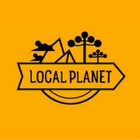
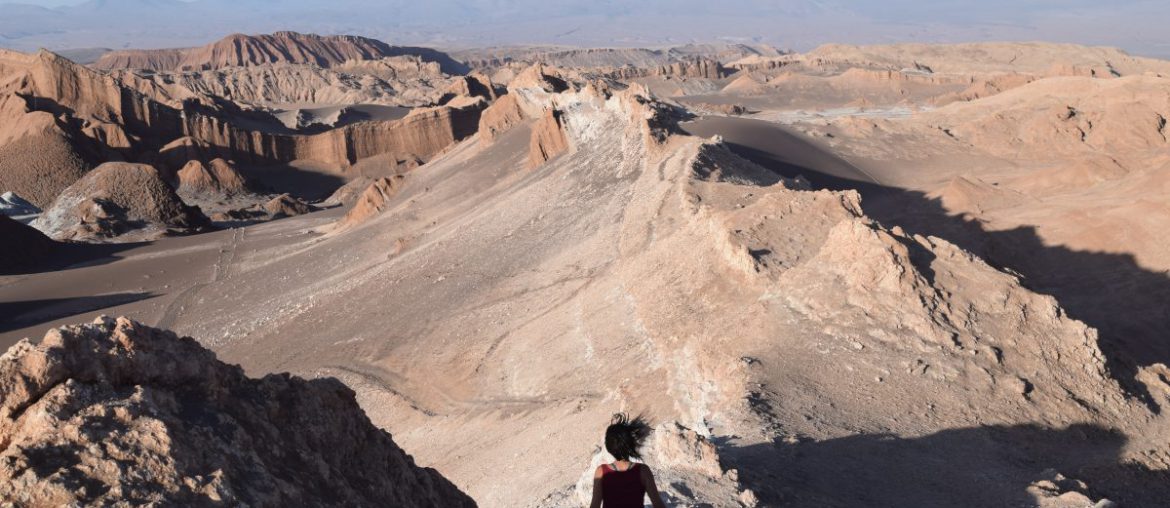
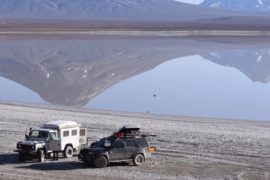
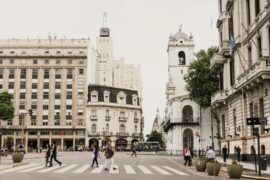
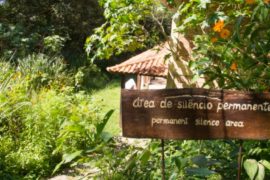
Comentários estão fechados.